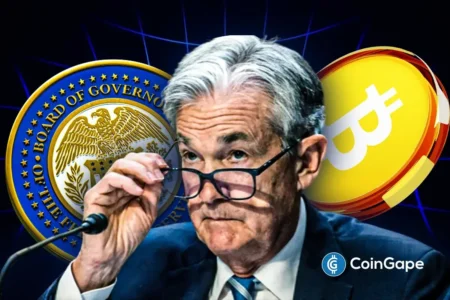Bitcoin’s Downturn: Michael Saylor’s Firm Stance and Market Implications
Bitcoin (BTC) has recently experienced a sharp decline, plunging nearly 9% in a single week. This downturn has triggered renewed anxiety across the cryptocurrency market, leading many to reassess their positions and strategies. Amid this turbulence, Michael Saylor, the executive chairman of Strategy, has reaffirmed the company’s steadfast commitment to its substantial Bitcoin reserves. His resolute stance raises questions about market dynamics and investor confidence during challenging times.
Saylor’s Commitment Amid Market Corrections
In the face of Bitcoin’s price drop, Saylor’s declaration, “I won’t back down,” signals a strong commitment to the company’s Bitcoin acquisition strategy. Many investors are left wondering if Strategy—known for its aggressive purchases—will maintain this trajectory. While Saylor refrained from suggesting immediate purchases, his reaffirmation of Bitcoin conviction sends a clear message: the company is dedicated to accumulating assets despite current market volatility. This unwavering commitment could serve as a stabilizing factor within a crypto landscape that is grappling with severe corrections.
Macro Pressure and the Role of the Fed
Market conditions are further complicated by external economic factors. According to Bank of America’s chief investment strategist, Michael Hartnett, the Federal Reserve may need to reevaluate its stance on interest rates. Hartnett’s assertion that Bitcoin will be the first asset affected by potential Fed capitulation adds another layer of macro pressure on BTC. Such commentary emphasizes the interconnected relationship between traditional finance and cryptocurrency, highlighting how fiscal policies can influence digital asset valuations.
Strategy’s Bitcoin Holdings and Stock Performance
Strategy holds an impressive 649,870 Bitcoin, with an average acquisition cost of $74,430. Interestingly, despite the current market crash, the firm’s Bitcoin portfolio remains in the green, reflecting a roughly 16% gain. However, the company’s stock, MSTR, has not fared as well. TradingView data shows the stock falling towards the $170 level, raising concerns that its value has significantly declined in relation to the Bitcoin reserves. This drop emphasizes the volatility of tech stocks linked to cryptocurrency and serves as a reminder of the risk involved in holding such positions.
Retail Confidence Amid Price Declines
Amidst the turbulence, Saylor conducted a community poll which revealed that 77.8% of participants held onto their Bitcoin investments during the recent downturn. This statistic underscores a persistent confidence among retail investors, even as BTC prices skidded towards the $80,000 mark. Such resilience aligns with Saylor’s long-term belief that market volatility should not derail established mission objectives. This continued commitment from retail holders may pose a buffer against deeper market corrections, a factor that resonates within the broader crypto community.
Skepticism Surrounding Bitcoin
Despite the positive sentiment among some investors, Bitcoin’s retreat from previous highs has reignited skepticism among critics. Figures like Peter Schiff have voiced their concerns, asserting that Bitcoin is transitioning from strong holders to weak ones. Schiff argues that such a shift could initiate larger sell-offs, placing Bitcoin at risk of being perceived as the "weakest link" in the risk-asset chain. These perspectives reveal a critical dichotomy within the market, where bullish sentiments clash with bearish forecasts, shaping the future trajectory of Bitcoin.
The Way Forward: A Balancing Act
As Bitcoin navigates through significant volatility, the future appears uncertain but also ripe with opportunity. Investors like Saylor showcase a willingness to stand firm in their convictions, emphasizing the importance of long-term strategies in a speculative environment. Conversely, market skeptics raise valid points that could influence more cautious investors.
Whether Bitcoin represents a reliable store of value or a speculative asset remains a primary consideration. As factors from both retail sentiment and macroeconomic conditions come into play, the trajectory of Bitcoin will likely hinge on the delicate balancing act between investor confidence and external pressures. In this evolving landscape, clarity may emerge over time, yet navigating these complexities will require astute awareness and strategic foresight.
















